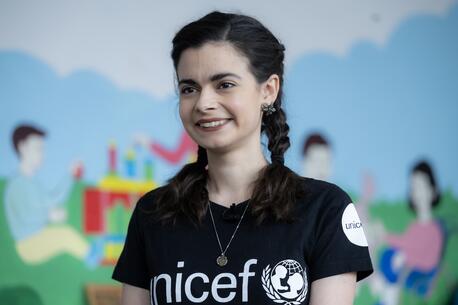NewsNet: State of Africa's Children
UNICEF's first ever comprehensive report assessing the status of Africa's children cited major challenges and some significant gains in the effort to cut that continent's stubbornly high child mortality rates.
The State of Africa's Children 2008: Child Survival, released late last month, noted that among the nearly 10 million children who die each year before they reach age five, half of those deaths occur in Africa.
UNICEF's first ever comprehensive report assessing the status of Africa's children cited major challenges and some significant gains in the effort to cut that continent's stubbornly high child mortality rates.
The State of Africa's Children 2008: Child Survival, released late last month, noted that among the nearly 10 million children who die each year before they reach age five, half of those deaths occur in Africa.
[[{"type":"media","view_mode":"media_large","fid":"378","attributes":{"class":"media-image","typeof":"foaf:Image","height":"344","width":"425","style":""}}]] UNICEF's first ever comprehensive report assessing the status of Africa's children cited major challenges and some significant gains in the effort to cut that continent's stubbornly high child mortality rates.
The State of Africa's Children 2008: Child Survival, released late last month, noted that among the nearly 10 million children who die each year before they reach age five, half of these deaths occur in Africa.
[[{"type":"media","view_mode":"media_large","fid":"378","attributes":{"class":"media-image","typeof":"foaf:Image","height":"344","width":"425","style":""}}]] Calling on governments, aid agencies, NGOs, communities and others to coalesce around the goal of child survival, the report urges strengthening health systems through greater investment and community partnerships. It also stresses the need to deliver a package of proven health services across a continuum that spans pregnancy, childbirth, post-natal and newborn periods, and extends into childhood.
Despite its obvious importance, the report seems to have received minimal news coverage. Reuters mentioned the report in a story about the food crises, and Inter Press Service published a fairly in-depth article.
While many of the findings were grave, the report also cited some heartening strides, including advances in malaria prevention and treatment, as well as increased access to antiretroviral treatment for HIV-positive mothers and children. Increased measles immunizations and follow-up campaigns contributed this marvelous result: Between 2000 and 2006, measles deaths among children in Africa dropped an amazing 91 percent. Watch the video to learn about UNICEF's efforts to immunize children against measles and other diseases.
BACKGROUND NOTE: I recently visited two of the countries mentioned in this report, Angola and Swaziland. Both face steep challenges. Angola has the second highest child mortality rate in the world, with one in four children dying before their fifth birthday. The tiny nation of Swaziland has the world's highest HIV prevalence rate.
I met some of the children behind these statistics. One afternoon, in a UNICEF-supported health clinic in Angola, I saw a severely malnourished 15-month girl clinging to life. Two days later, I learned that she had died. But in that same clinic, just down the hall, was a room full of other malnourished children"and these children were improving, in part, because of UNICEF's support.
In Swaziland at a UNICEF-supported clinic that provides therapeutic feeding to malnourished children, I held a seven-year-old girl who weighed less than my 22-month old son. At first, I assumed she was two or three years old. But she, too, had improved, after her family brought her to this clinic.
I saw first-hand that UNICEF has the knowledge, the skills and the devotion to help save these children. With additional resources"and with renewed fervor from partners and stakeholders"we could save even more.
Inspired to give? Donate today.


